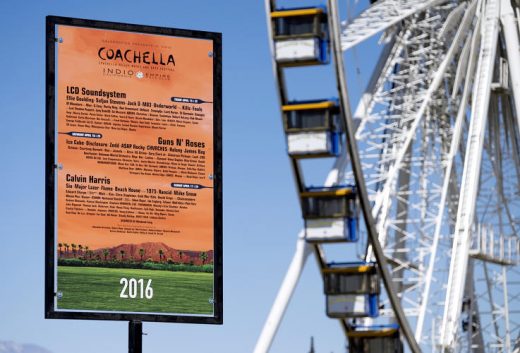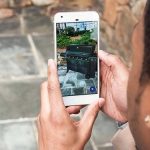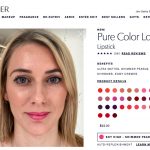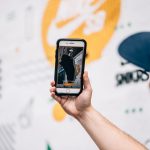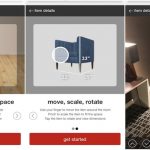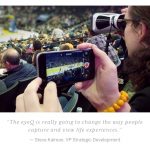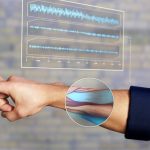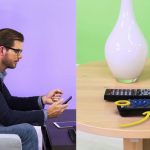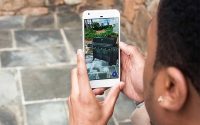How To Make Coachella Even Trippier: Augmented Reality Earbuds
Sia is on, and I am in hallway.
Not in a hallway, I am actually on a field surrounded by tens of thousands of people at the Coachella Valley Music and Arts Festival. But the music streaming into my ears, filtered through a pair of Here Active Listening wireless earbuds that are set to “hallway” mode, has an echo effect that makes Sia sound like she is singing from the other end of my high school. It’s like augmented reality for my ears. And though it may seem counterintuitive, the hallway effect is cool: It feels like the concert is happening in my head instead of 50 yards away.
Next to me, my friend Victoria pulls her own set of Here buds out of her ears (she’d been rocking out in Tiesto mode, a filter customized by the Dutch DJ) and takes in row upon row of dancing revelers. “The problem is that you lose the ambient sound around you,” she says. “It makes you feel discombobulated.” I pull out one bud to hear her. The rest of me is in the zone with Sia.
Here is the latest product from Doppler Labs, a San Francisco-based wearable technology company whose mission, stated boldly on its website, is to “change the way we hear the world.” Founded by Noah Kraft, a musician and film producer, and Fritz Lanman, a former director of corporate strategy executive at Microsoft, Doppler came out with tech-enabled earplugs that reduce volume without sacrificing clarity of sound in 2014. Here, which has raised $40 million in funding from the likes of David Geffen, Quincy Jones, and Mark Ronson, advances that concept. The Bluetooth-enabled buds come in a compact carrying case that also serves as a charger. They pair with an iPhone that acts as a remote, allowing the wearer to bump up the bass or suppress certain frequency levels manually through the Here app or select one of the pre-programmed filters—from Psychedelic to Human Speech—that take the guesswork out of sound manipulation, like attaching an effects pedal to an electric guitar. (Watching TV in Carnegie Hall mode is pretty trippy.) You can also selectively “Tune Out” specific noises: buses, subways, airplane engines, and, blissfully, your open-office mates.
“I might hear a guitar screech and think, rock on, and you might think that’s the worst noise you ever heard,” says Kraft. “In this day and age, there’s no reason we shouldn’t have the ability to control the outside world and control what we hear.”
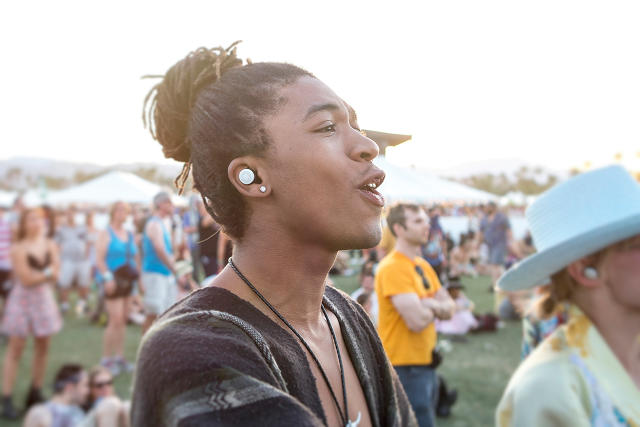
One thing Here can’t currently control: recorded music. The moment I put the buds on and discovered that I could eliminate the sound of the air conditioner blasting in my office with a simple swipe of my finger, I wanted to go right into my music library and play Drake. No such luck. That’s by design, according to Kraft. “They’re essentially digital ears,” he says. “We don’t want to be confused for a headphone.” At least, not yet. Here is in its early days, and Doppler is still exploring its potential applications before it releases a mass-market version, planned for later this year.
For now, Doppler is using Coachella as a kind of testing ground for the earbuds. The company only produced 10,000, which are currently not available to the general consumer, though there is a waitlist. But Coachella wristband holders received a special offer to buy Here for $199. The goal: They’ll bring the buds to the festival, use some of the filters (including special ones Doppler made for different Coachella stages), and report back so the company can further finesse the product. Doppler has also set up stations at the festival to introduce artists and producers to the technology and demo the buds on attendees.
“The most amazing thing is the filters: You press the crowd filter and you could just hear the music and the people talking to you. You couldn’t hear anything else,” Shaun Alexander, a New Zealander in a large black poncho, tells me after getting a Here demo.
Randy Irwin, who was the vice president of marketing for Sony Music in the ‘90s, likens the experience of wearing the buds to one that used to require mind-altering substances. “It’s more like the old days and what’s going on in my head,” he says. “The buds do it for you—and the cops can’t get you for it.”
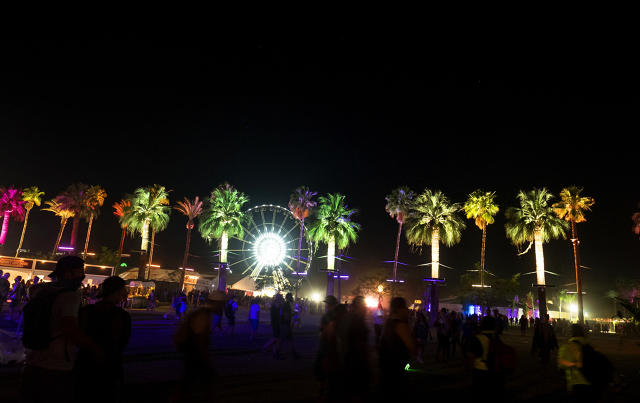
It’s not just about turning up. Here’s “Tune Out” features are equally impressive. During the Coachella demos, the moment that makes most festival attendees freak out is when a flower crown-wearing Doppler staffer drops the volume of the buds to -22 decibels and shuts out the noise of the festival instantaneously and entirely. (“What!” exclaims one demo-ee, lifting his hands to his ears as if to make sure they are still there.) For some, the ability to tune out trumps the fancy filters.
“The airplane mode would be awesome,” says Alexander, the New Zealander. “Filtering out the airplane noise and being able to have a normal conversation would be brilliant. In one way, that would be more interesting for me, because at a concert, I like to let the sound engineers do the job they’re good at.”
Similarly, I found Here to be more useful in my own home (making a Major Lazer music video sound like a raging concert, for example) than at Coachella, where I want to be a part of the crowd and its commotion—or at least, as my friend says, be aware of it. I go to festivals to enjoy music with other people, not tune them out selectively. But I may be in the minority. And in any case, what I am experiencing with Here is only the start of what’s possible with a product that can sophisticatedly manipulate the way we receive information through sound.
Back in the demo station, a Doppler employee named Meghan Powers is showing off Here to Ray Reed, who came to Coachella from Miami. As she concludes, he starts firing off a series of questions: “So, I assume you guys are going to do different apps, app updates for different events? What’s the plan?”
“Oh my God,” says Powers, sounding pleasantly surprised. “You’re, like, way ahead.”
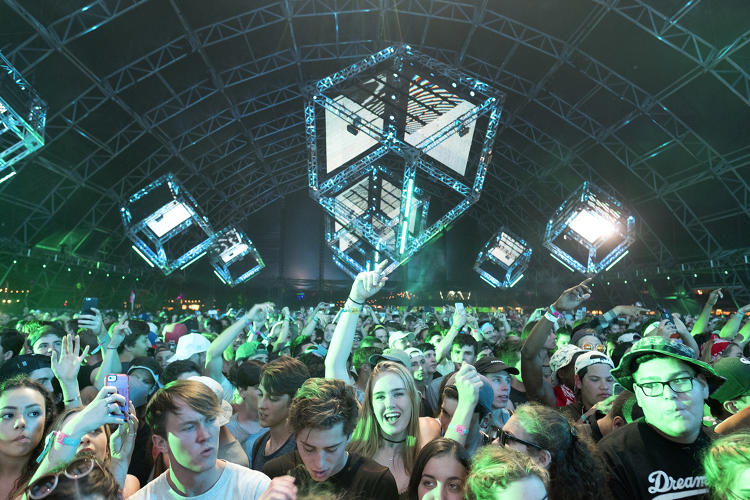

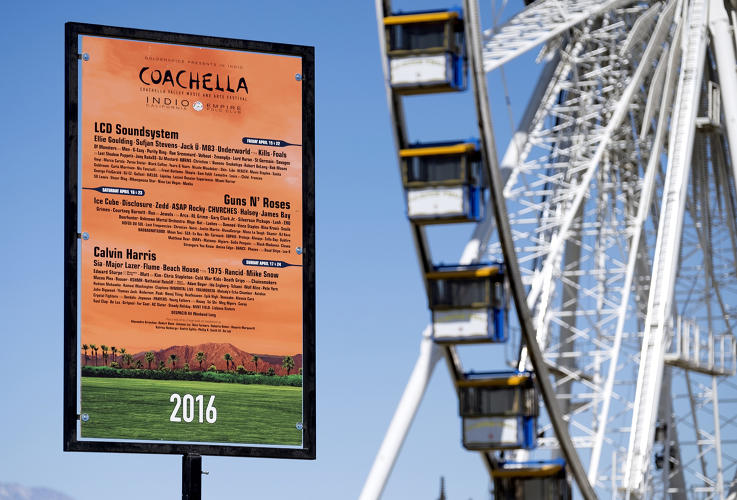
Fast Company , Read Full Story
(42)

